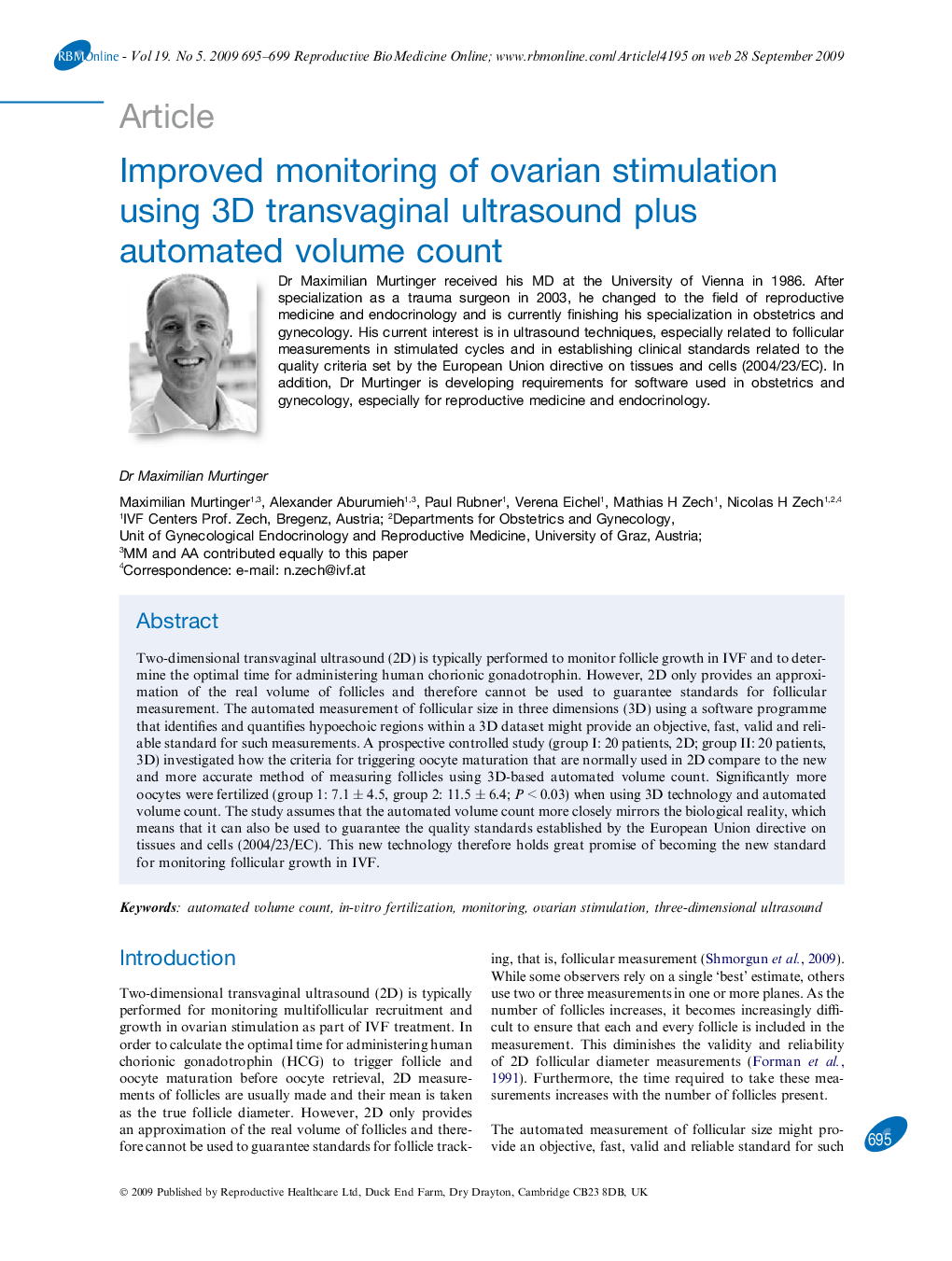| Article ID | Journal | Published Year | Pages | File Type |
|---|---|---|---|---|
| 3971974 | Reproductive BioMedicine Online | 2009 | 5 Pages |
Two-dimensional transvaginal ultrasound (2D) is typically performed to monitor follicle growth in IVF and to determine the optimal time for administering human chorionic gonadotrophin. However, 2D only provides an approximation of the real volume of follicles and therefore cannot be used to guarantee standards for follicular measurement. The automated measurement of follicular size in three dimensions (3D) using a software programme that identifies and quantifies hypoechoic regions within a 3D dataset might provide an objective, fast, valid and reliable standard for such measurements. A prospective controlled study (group I: 20 patients, 2D; group II: 20 patients, 3D) investigated how the criteria for triggering oocyte maturation that are normally used in 2D compare to the new and more accurate method of measuring follicles using 3D-based automated volume count. Significantly more oocytes were fertilized (group 1: 7.1 ± 4.5, group 2: 11.5 ± 6.4; P < 0.03) when using 3D technology and automated volume count. The study assumes that the automated volume count more closely mirrors the biological reality, which means that it can also be used to guarantee the quality standards established by the European Union directive on tissues and cells (2004/23/EC). This new technology therefore holds great promise of becoming the new standard for monitoring follicular growth in IVF.
